

11 Better Ways To Say “Safe Travels”
“Safe travels” is a polite way to wish somebody well on their upcoming journey. However, there are better ways to be polite and reassuring to your friends when they’re ready to go somewhere (often by plane). This article will share the best alternatives for such a case with you.
What Can I Say Instead Of “Safe Travels”?
There are plenty of ways to use “safe travels” in more exciting manners. You should check out one of the following:
- Have a good flight
- Happy landings
- See you on the other side
- Let me know when you arrive safely
- Stay safe out there
- Enjoy your trip
- Have a relaxing time away
- Happy travels
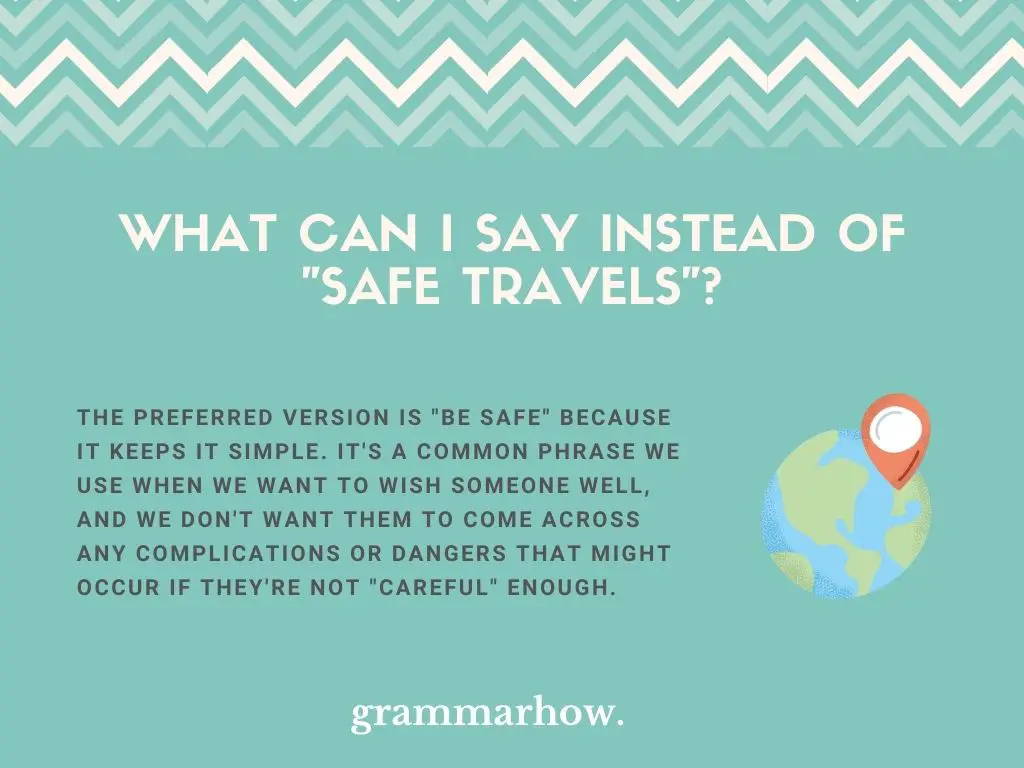
The preferred version is “be safe” because it keeps it simple. It’s a common phrase we use when we want to wish someone well, and we don’t want them to come across any complications or dangers that might occur if they’re not “careful” enough.
“Be safe” is great to show we care about someone. It lets them know that we worry about them, and we want them to stay “safe” no matter what happens. It works regardless of the method of transport for the journey as well, which makes it a good general phrase.
It’s common for family members to use the phrase “ be safe ” when seeing each other off. This shows that there is a lot of love behind the phrase and that it works well to show how much you care about someone’s wellbeing.
Here are a few ways we might be able to use this phrase:
- Be safe out there. I know you like to find trouble, but for once, I’d love it if you looked after yourself!
- Be safe on your way out! I would love to hear from you and see the pictures of all the things you get up to.
- Don’t forget to message me when you get there! Be safe, and I love you!
“Safe trip” is a simple phrase we can use to make sure someone knows we care. Using words like “safe” reminds people that we worry about them. Even if we are not physically there with them, we hope they are “safe” and do not get into trouble.
This phrase works well regardless of the trip that someone is taking. It could be a long-distance or a short-distance trip. Likewise, it could be by car, plane, boat, or something else entirely!
This phrase works in the following situations:
- Safe trip, Yuri! I’ll miss you, but I know you’ll be thinking about me while you’re away.
- Safe trip back to your hometown, then. Let me know when you get there safely.
- Safe trip, old friend. I’ll see you again whenever you’re next in town!
Have A Good Flight
“Have a good flight” is appropriate to use when someone is going to get on a plane. We use “flight” here to be specific, which helps us to show that we know what someone is getting up to and what they’re likely going to expect from their journey.
We can use this phrase in the following ways:
- Have a good flight! I’m sure you can get all the food and drink you want on there!
- Have a good flight, and don’t forget to let me know when you land safely!
- Have a good flight! There’s nothing to worry about, and you know it’ll all be okay!
Happy Landings
“Happy landings” specifically highlights the “landing” portion of a journey. It works well when someone is going on a plane, and we want them to be “happy” throughout the course of their journey.
Here are a few useful examples of how this one works:
- Happy landings, fella! Don’t forget that they really like their tips out there when you’re dining out!
- Happy landings, then! I’ll miss you every second, so I want you to send me all the photos you can!
- Happy landings! Don’t forget to explore some of the local scenery!
See You On The Other Side
“See you on the other side” is an informal idiom that works well in many cases. We can do it when we know that someone will be returning to see us again soon. “The other side” indicates the place where we will be staying while they go on a journey.
Check out some of these examples to see how it looks:
- See you on the other side, then! Have a great holiday!
- Have a great time away, Fred! See you on the other side!
- I’ll be here waiting for you as always! See you on the other side!
Let Me Know When You Arrive Safely
“Let me know when you arrive safely” is a calm way to let someone know that you are worried. When they arrive at their destination, we can ask them to “message” us to ease our minds and show us that they are thinking about us even after their journey.
We could also use a phrase like “text me when” instead of “let me know when.” If we want to be more specific about the manner of messaging, this phrase works just as well.
This phrase works well in the following ways:
- Let me know when you arrive safely, please! You know how much I worry about you while I’m not around!
- Text me when you arrive safely, please! I want to know just how much fun you’re getting up to.
- Let me know when you arrive safely! I’ll miss you every second that you’re away.
Stay Safe Out There
“Stay safe out there” is a good way to show that you care about someone. “Stay safe” helps to let them know that you’ll be looking out for them and that you want them to explore, but in a reasonable way that won’t cause them harm.
We typically use this phrase when someone is going on a long-distance journey. “Out there” is a good indicator of that.
Check out some of these examples to see how it works:
- Stay safe out there, then! I know you’ll make all the best choices while you’re away.
- Stay safe out there! I’ll miss you, but I know you’ll be having an absolutely adoring time!
- Stay safe out there. You never know what hijinx you might get into, so make sure you text me!
Enjoy Your Trip
“Enjoy your trip” is a simple way to show someone that you care. It helps to let them know that we want them to “enjoy” themselves. While trips can sometimes be boring (especially long-distance ones), we want people to feel like they can still have fun.
This simple phrase works as follows:
- Enjoy your trip, Michael! Let me know when you arrive so we can discuss the adventure more!
- Enjoy your trip! Don’t forget to immerse yourself in the local culture when you get there!
- Enjoy your trip! I expect you to be fluent in German by the time you get back, okay?
Have A Relaxing Time Away
“Have a relaxing time away” works well in many cases. It’s most effective when we know that someone is inclined to worry (whether about the journey or the place they’re going). If we want to calm them down, this phrase works well.
These examples will help you make more sense of it:
- Have a relaxing time away! Remember, you don’t need to worry about a thing when you get on that plane!
- Have a relaxing time away! If anyone deserves it, it is most certainly you!
- Have a relaxing time away! I’m going to miss you, but I know you’ll be back in no time!
Happy Travels
“Happy travels” works really well when we want people to feel “happy” on their journey. “Travels” can refer to any method of transport, but the idea is that they’ll be spending a long time getting from point A to point B, and we want them to feel “happy.”
Perhaps one of these examples will help you make more sense of it:
- Happy travels, mate! I know you’ll love it over there in Australia, but you must tell me all about it.
- Happy travels, Sue! I’ll miss you, so don’t forget to write to me every day about what you do.
- Happy travels, Dan! Thank you for coming to see me again, and I’ll see you again soon, yeah?
“Bon voyage” is a great way to wish someone well before they go on an adventure. It’s French (and Italian), and it means “good journey.” It’s a commonly-used exclamation in English when we want to wish somebody well for something they’re going to do.
It’s also comforting because it shows that we do not wish any problems to come their way when they’re on their journey.
- Bon voyage, my little friend! I’ll see you again when you return!
- Bon voyage, then! I will miss you, but I hope you get a chance to text me a bunch when you get there!
- Bon voyage! I love you so much, and I’ll definitely miss you while you’re away.
You may also like: Safe Travels – Meaning & Usage (Helpful Examples)

Martin holds a Master’s degree in Finance and International Business. He has six years of experience in professional communication with clients, executives, and colleagues. Furthermore, he has teaching experience from Aarhus University. Martin has been featured as an expert in communication and teaching on Forbes and Shopify. Read more about Martin here .
- “Arrive To”, “Arrive At”, or “Arrive In”? Correct Preposition
- “Made It Home Safe” vs. “Made It Home Safely” – Correct Version
- Be Safe, Stay Safe, or Keep Safe? [Helpful Examples]
- Will Arrive or Will Be Arriving – What’s the Difference?
Discover, Learn, Contribute, Connect
How to Say “Have a Safe Trip”: Formal and Informal Ways
When someone is about to embark on a journey, it’s always thoughtful to express your well wishes and hopes for their safety. Saying “have a safe trip” is a common phrase used to convey this sentiment. However, there are various ways to express this phrase, depending on the level of formality and the regional dialects. In this guide, we will explore the formal and informal ways to say “have a safe trip” while also providing tips, examples, and insights.
Table of Contents
Formal Expressions for “Have a Safe Trip”
Formal expressions are commonly used in professional or polite settings. When wishing someone a safe journey in a formal manner, you can say:
“May you have a safe trip.”
This phrase is a kind wish that explicitly expresses your hope for their well-being during their travels. It is a polite and formal way to wish someone a safe journey.
Another formal way to say “have a safe trip” is:
“Wishing you a safe and pleasant journey.”
This phrase not only conveys your concern for their safety but also emphasizes your desire for them to have a pleasant experience while traveling.
Informal Expressions for “Have a Safe Trip”
Informal expressions are commonly used among friends, family, or in casual conversations. When you want to convey your well wishes in a more familiar way, you can use these informal phrases:
1. “Have a safe trip!”
This simple and straightforward phrase is commonly used to wish someone a safe and trouble-free journey. It’s often used among friends and family members.
2. “Take care and have a safe journey!”
This expression not only wishes the person a safe trip but also reminds them to take care of themselves throughout their journey. It shows your concern for their well-being.
3. “Stay safe and have a great trip!”
This phrase combines the wish for safety with a hope for an enjoyable trip. It conveys your genuine care for the person’s safety while encouraging them to have a wonderful time.
Tips for Expressing “Have a Safe Trip”
Here are some tips to keep in mind when expressing your wishes for a safe trip:
1. Consider the Recipient
Before selecting an expression, consider the relationship you have with the person and the context of the conversation. Choose a formal or informal expression accordingly.
2. Use Warm and Positive Language
When expressing your well wishes, use warm and positive language to convey your sincerity and genuine care for the person’s safety. This helps create a positive impact and leaves a lasting impression.
3. Personalize Your Message
Add a personal touch to your message by including the person’s name or specific details about their trip. This shows that you are genuinely interested in their well-being and are invested in their journey.
4. Offer Assistance If Appropriate
If you are close to the person and willing to help, offer assistance with tasks such as pet sitting, collecting mail, or any other support they may need during their absence. This shows your willingness to go the extra mile.
Examples for “Have a Safe Trip”
Now, let’s look at some examples of how to say “have a safe trip” using the different expressions discussed above:
Formal Examples:
- “May you have a safe trip, John. Take care and stay well.”
- “Wishing you a safe and pleasant journey to Paris, Sarah. Enjoy your time there!”
Informal Examples:
- “Have a safe trip, Mom. Drive carefully and call us when you arrive.”
- “Take care and have a safe journey, my friend! Let’s catch up when you’re back.”
Remember, the key is to convey your genuine concern for the person’s safety and well-being while tailoring your expressions to the appropriate level of formality.
In conclusion, there are various ways to say “have a safe trip” depending on the level of formality and the nature of your relationship with the person. Whether you choose a formal expression such as “May you have a safe trip” or an informal phrase like “Have a safe trip,” the most important thing is to convey your genuine care and concern for their safety. So next time someone you know is heading out on a journey, don’t forget to wish them a safe and pleasant trip!
Related Guides:
- How to Say “Have a Safe Trip Back Home”: A Guide with Tips and Examples
- Guide: How to Say “Have a Safe Trip Home”
- Guide: How to Say “Have a Safe Trip” in French
- How to Say “Have a Safe Trip” in Korean: Formal and Informal Ways
- How to Say “Have a Safe Trip” in Somali: A Comprehensive Guide
- How to Say “Have a Safe Trip” in Spanish: Guide with Tips and Examples
- Tips on Wishing Someone a Safe Trip Back Home
- How to Say “Safe Trip” in Korean: A Comprehensive Guide
About The Author
Lilly Tammy
- COVID-19 travel advice
Lower your risk of COVID-19 as you travel for a safe and fun adventure.
Successful travel starts with being prepared for the unexpected. Coronavirus disease 2019, known as COVID-19, is now a part of standard travel planning.
As you choose a destination, travel group or event, add COVID-19 to the list of things to research. When packing for yourself or anyone you're caring for on the trip, consider COVID-19 prevention and testing.
No one wants to plan for the worst. But having a plan in case you catch the COVID-19 virus while traveling can save time if you need medical care.
To start, it can help to ask these basic questions as you make plans.
Am I up to date with my COVID-19 vaccine?
Staying up to date on your COVID-19 vaccine helps prevent serious illness, the need for hospital care and death due to COVID-19 .
If you need a vaccine, plan to get it at least a few weeks before you travel. Protection from the vaccine isn't immediate.
Am I, a travel companion or a person I live with at high risk of serious COVID-19 illness?
Many people with COVID-19 have no symptoms or mild illness. But for older adults and people of any age with certain medical conditions, COVID-19 can lead to the need for care in the hospital or death.
If you or those around you are at high risk of serious COVID-19 illness, take extra safety measures during or after travel.
Ask a healthcare professional if there are any specific actions you should take.
Does my destination, tour group or event need proof that I had a COVID-19 vaccine? Do I need to show proof of a negative COVID-19 test?
The country you travel to may not need to know your COVID-19 status. But you might need the information for other reasons.
Events, venues or tour groups might require proof that you are COVID-19 negative or are up to date on a COVID-19 vaccine. Check before you go so you have all the paperwork you need.
What's the plan if I get COVID-19 on my trip?
No one wants to get sick while traveling. But in case you do, it helps to know where you can get medical care and whether you'll be able to stay apart from others while you have symptoms.
Put together a COVID-19 kit with rapid home tests, masks, a thermometer, disinfectant wipes and hand sanitizer that contains at least 60% alcohol.
Before you leave, gather health information from your healthcare professional. Make sure it gives the details on any health conditions you're managing and medicine you take.
COVID-19 spread during travel
The virus that causes COVID-19 spreads mainly from person to person. When the virus is spreading, spending time indoors with a crowd of people raises your risk of catching it. The risk is higher if the indoor space has poor airflow.
The coronavirus is carried by a person's breath.
The virus spreads when a person with COVID-19 breathes, coughs, sneezes, sings or talks. The droplets or particles the infected person breathes out could possibly be breathed in by other people if they are close together or in areas with low airflow.
The virus carried by a person's breath can land directly on the face of a nearby person, after a sneeze or cough, for example. And people may touch a surface that has respiratory droplets and then touch their faces with hands that have the coronavirus on them.
Clean hands
While you travel, one way to lower your risk of COVID-19 is to clean your hands often.
Wash your hands after using the bathroom, before making food or eating, and after coughing, sneezing or blowing your nose. If you touch something that others regularly touch, such as an elevator button or a handrail, make sure to clean your hands afterward.
Also, try to avoid touching your eyes, nose or mouth.
Wearing a face mask is another way to lower your risk of COVID-19 .
Travel brings people together from areas where viruses may be spreading at higher levels. Masks can help slow the spread of respiratory viruses in general, including the COVID-19 virus.
Masks help the most in places with low airflow and where you are in close contact with other people. Also, masks can help if viruses are spreading at high levels in the places you travel to or through.
Masking is especially important if you or a companion have a high risk of serious COVID-19 illness. Choose the most protective mask that fits well and is comfortable.
Get the COVID-19 vaccine
As the virus that causes COVID-19 changes, COVID-19 vaccines are updated, so stay up to date with the recommended shots.
Know when the COVID-19 virus is spreading in your area
Check with health agencies in the area to see where the COVID-19 virus is spreading. Information about the spread of the virus may include the number of people in the hospital with COVID-19 or the number of people who test positive for the disease.
Keep some space around you
Choose outdoor activities and keep some distance between yourself and others. Poor airflow plus lots of people crowded together equals a higher chance you'll come in contact with the virus that causes COVID-19 .
If you can, try to avoid spending time with people who have COVID-19 symptoms or who are sick.
There will likely be times during travel when you don't have a choice about how close you are to others. Here are some tips for air travel, public transportation and lodging.
The risk of catching the virus that causes COVID-19 from air travel is thought to be low.
Air in the plane's cabin changes over quickly during the flight, being replaced every few minutes in some planes. Airplane air also is often filtered. So germs, including viruses, are trapped before they spread.
The air flowing down from vents above the seats in each row may help keep germs from spreading. Seats also may act as a barrier to germ spread on a plane, unless the person who is ill is sitting close to you.
You can help lower your risk by spreading out to keep distance between you and others when you can and cleaning your hands regularly.
Wearing a mask in crowded areas, such as security lines and bathrooms, can help protect you from COVID-19 and other respiratory illnesses.
Trains, buses and cars
Trains and buses may have good airflow and air filtering. But check before you travel so you know what to expect. When a vehicle is crowded, wear a face mask and take other steps, such as cleaning your hands.
Taxis and private cars used for ride-sharing may not have air filtering. But in most cases, rolling down a window could be an option to improve airflow.
Rental car companies may post their cleaning policies on the internet, or you can ask directly when you book the vehicle.
Hotels and other lodging
Cleaning protocols at hotels, vacation rentals and other lodging have largely returned to the way they were before the COVID-19 pandemic. If you have questions about how hosts or businesses protect guests, contact them directly. In public areas of hotels, take steps to lower your risk of catching the virus that causes COVID-19 .
Put safety first
Despite your planning, an illness may delay or cancel your trip. Stay home if you or anyone you're traveling with has:
- Symptoms of COVID-19 , such as fever or new loss of taste or smell.
- Taken a COVID-19 test and is waiting for results.
- Been diagnosed with COVID-19 .
Keep watch for serious symptoms of COVID-19 , such as trouble breathing or chest pain. If you or a person you're taking care of has symptoms that worry you, get help.
Once the fever is gone and symptoms are getting better, you may choose to travel. But for about five days after feeling better, you could still give others the virus that causes COVID-19 . Take extra actions to protect the people around you.
- Wear a mask.
- Keep your distance from others, especially when indoors.
- Clean your hands regularly.
- Keep the air flowing by turning on fans or opening windows when you can.
If you start to feel worse or your fever comes back, avoid being around others again until you feel better.
Stay flexible
With COVID-19 vaccinations, testing and treatment, events and travel are back to typical levels in many places. But as waves of COVID-19 outbreaks happen, it's important to stay flexible with your plans. Knowing whether the COVID-19 virus is spreading in your area or in places where you're traveling can help you make decisions about whether to go and what to put on your agenda.
- Stay up to date with COVID-19 vaccines. Centers for Disease Control and Prevention. https://www.cdc.gov/coronavirus/2019-ncov/vaccines/stay-up-to-date.html. Accessed May 15, 2024.
- Understanding how COVID-19 vaccines work. Centers for Disease Control and Prevention. https://www.cdc.gov/coronavirus/2019-ncov/vaccines/different-vaccines/how-they-work.html. Accessed May 15, 2024.
- People with certain medical conditions. Centers for Disease Control and Prevention. https://www.cdc.gov/coronavirus/2019-ncov/need-extra-precautions/people-with-medical-conditions.html. Accessed May 15, 2024.
- Coronavirus disease (COVID-19): Travel advice for the general public. World Health Organization. https://www.who.int/emergencies/diseases/novel-coronavirus-2019/question-and-answers-hub/q-a-detail/coronavirus-disease-covid-19-travel-advice-for-the-general-public. Accessed May 15, 2024.
- Centers for Disease Control and Prevention. COVID-19. In: CDC Yellow Book 2024. https://wwwnc.cdc.gov/travel/yellowbook/2024/infections-diseases/covid-19. Accessed May 15, 2024.
- Centers for Disease Control and Prevention. Obtaining health care abroad. In: CDC Yellow Book 2024. https://wwwnc.cdc.gov/travel/yellowbook/2024/health-care-abroad/health-care-abroad. Accessed May 15, 2024.
- Goldman L, et al., eds. COVID-19: Epidemiology, clinical manifestations, diagnosis, community prevention, and prognosis. In: Goldman-Cecil Medicine. 27th ed. Elsevier; 2024. https://www.clinicalkey.com. Accessed May 16, 202.
- Taking steps for cleaner air for respiratory virus prevention. Centers for Disease Control and Prevention. https://www.cdc.gov/respiratory-viruses/prevention/air-quality.html. Accessed May 16, 2024.
- How COVID-19 spreads. Centers for Disease Control and Prevention. https://www.cdc.gov/coronavirus/2019-ncov/prevent-getting-sick/how-covid-spreads.html. Accessed May 16, 2024.
- COVID-19 overview and infection prevention and control priorities in non-U.S. healthcare settings. Centers for Disease Control and Prevention. https://www.cdc.gov/coronavirus/2019-ncov/hcp/non-us-settings/overview/index.html. Accessed May 16, 2024.
- Hygiene and respiratory viruses prevention. Centers for Disease Control and Prevention. https://www.cdc.gov/respiratory-viruses/prevention/hygiene.html. Accessed May 14, 2024.
- About handwashing. Centers for Disease Control and Prevention. https://www.cdc.gov/clean-hands/about/index.html. Accessed May 16, 2024.
- Masking during travel. Centers for Disease Control and Prevention. https://wwwnc.cdc.gov/travel/page/masks. Accessed May 16, 2024.
- Masks and respiratory virus prevention. Centers for Disease Control and Prevention. https://www.cdc.gov/respiratory-viruses/prevention/masks.html. Accessed May 16, 2024.
- How to protect yourself and others. Centers for Disease Control and Prevention. https://www.cdc.gov/coronavirus/2019-ncov/prevent-getting-sick/prevention.html. Accessed May 16, 2024.
- About physical distancing and respiratory viruses. Centers for Disease Control and Prevention. https://www.cdc.gov/respiratory-viruses/prevention/physical-distancing.html. Accessed May 16, 2024.
- How can ventilation reduce the risk of contracting COVID-19 on airplanes? World Health Organization. https://www.who.int/emergencies/diseases/novel-coronavirus-2019/question-and-answers-hub/q-a-detail/coronavirus-disease-covid-19-travel-advice-for-the-general-public. Accessed May 16, 2024.
- Bielecki M, et al. Air travel and COVID-19 prevention in the pandemic and peri-pandemic period: A narrative review. Travel Medicine and Infectious Disease. 2021; doi:10.1016/j.tmaid.2020.101915.
- Symptoms of COVID-19. Centers for Disease Control and Prevention. https://www.cdc.gov/coronavirus/2019-ncov/symptoms-testing/symptoms.html. Accessed May 16, 2024.
- Preventing spread of respiratory viruses when you're sick. Centers for Disease Control and Prevention. https://www.cdc.gov/respiratory-viruses/prevention/precautions-when-sick.html. Accessed May 16, 2024.
Products and Services
- A Book: Endemic - A Post-Pandemic Playbook
- Begin Exploring Women's Health Solutions at Mayo Clinic Store
- A Book: Future Care
- Antibiotics: Are you misusing them?
- COVID-19 and vitamin D
- Convalescent plasma therapy
- Coronavirus disease 2019 (COVID-19)
- COVID-19: How can I protect myself?
- Herd immunity and respiratory illness
- COVID-19 and pets
- COVID-19 and your mental health
- COVID-19 antibody testing
- COVID-19, cold, allergies and the flu
- COVID-19 tests
- COVID-19 drugs: Are there any that work?
- COVID-19 in babies and children
- Coronavirus infection by race
- COVID-19 vaccine: Should I reschedule my mammogram?
- COVID-19 vaccines for kids: What you need to know
- COVID-19 vaccines
- COVID-19 variant
- COVID-19 vs. flu: Similarities and differences
- COVID-19: Who's at higher risk of serious symptoms?
- Debunking coronavirus myths
- Different COVID-19 vaccines
- Extracorporeal membrane oxygenation (ECMO)
- Fever: First aid
- Fever treatment: Quick guide to treating a fever
- Fight coronavirus (COVID-19) transmission at home
- Honey: An effective cough remedy?
- How do COVID-19 antibody tests differ from diagnostic tests?
- How to measure your respiratory rate
- How to take your pulse
- How to take your temperature
- How well do face masks protect against COVID-19?
- Is hydroxychloroquine a treatment for COVID-19?
- Long-term effects of COVID-19
- Loss of smell
- Mayo Clinic Minute: You're washing your hands all wrong
- Mayo Clinic Minute: How dirty are common surfaces?
- Multisystem inflammatory syndrome in children (MIS-C)
- Nausea and vomiting
- Pregnancy and COVID-19
- Safe outdoor activities during the COVID-19 pandemic
- Safety tips for attending school during COVID-19
- Sex and COVID-19
- Shortness of breath
- Thermometers: Understand the options
- Treating COVID-19 at home
- Unusual symptoms of coronavirus
- Vaccine guidance from Mayo Clinic
- Watery eyes
Related Information
- Coronavirus: What is it and how can I protect myself?
- COVID-19 vaccines: Get the facts
- COVID-19 , cold, allergies and the flu: What are the differences?
5X Challenge
Thanks to generous benefactors, your gift today can have 5X the impact to advance AI innovation at Mayo Clinic.
- Credit cards
- View all credit cards
- Banking guide
- Loans guide
- Insurance guide
- Personal finance
- View all personal finance
- Small business
- Small business guide
- View all taxes
You’re our first priority. Every time.
We believe everyone should be able to make financial decisions with confidence. And while our site doesn’t feature every company or financial product available on the market, we’re proud that the guidance we offer, the information we provide and the tools we create are objective, independent, straightforward — and free.
So how do we make money? Our partners compensate us. This may influence which products we review and write about (and where those products appear on the site), but it in no way affects our recommendations or advice, which are grounded in thousands of hours of research. Our partners cannot pay us to guarantee favorable reviews of their products or services. Here is a list of our partners .
9 Ways To Travel More Safely
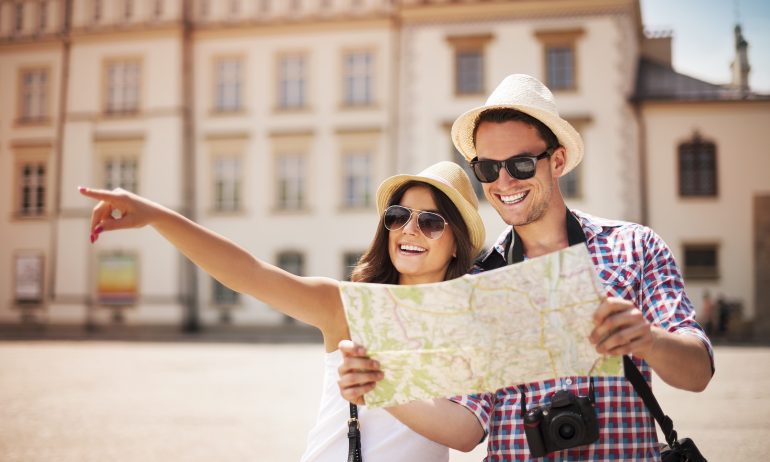
Many or all of the products on this page are from partners who compensate us when you click to or take an action on their website, but this does not influence our evaluations or ratings. Our opinions are our own.
Whether you're traveling within the U.S. or to a foreign country, you should take extra precautions to stay safe. Distractions born of travel — such as taking in the sights, eating delectable food and exploring new cities — can increase your risk.
But it doesn't have to be this way.
These international and domestic travel safety tips will help you reduce your risk so you can enjoy your vacation and avoid trouble as much as feasible. Here's how to travel safely — ranging from actions that can be implemented on the fly and ones that require a bit more preparation.
1. Digitize important documents
Your wallet or purse is filled with important documents that criminals can exploit. Leave unnecessary items at home (like your Social Security card) and make copies of everything else you would need in an emergency, like prescriptions, a backup credit card (so you can at least make a digital purchase in a pinch) and your passport.
Take a picture and upload them to a secure folder on the web. This way, if anything is stolen, you can easily take steps to reduce the damage that criminals can cause. You can easily call the bank to cancel debit and credit cards and request a new ID from the embassy. You can also use a secure digital vault system like 1Password or LastPass to store these documents.
2. Minimize how much cash you carry
It is important to have a little cash when traveling, but most retailers accept credit cards, even abroad. Not having cash minimizes your wallet's value to a thief, and you can dispute unknown charges from a card. Just make sure to carry a card that has no foreign transaction fees when traveling internationally.
3. Look less like a tourist
The more you dress and act like a local, the less risk there is from criminals targeting you as a tourist. Adapting your style to that of the locals, walking with confidence and keeping maps hidden can help you blend in. When using directions on your phone, only look at it briefly while walking.
Further, familiarize yourself with the city and your route before leaving the hotel. If you do need to look up directions for an extended period of time, consider stepping into a store or cafe to do so, rather than staying outside.
4. Share your itinerary with someone you trust
Whether you're traveling alone or with others, share your itinerary with someone you trust back home. Check in once a day to let them know that you've made it to your next destination or back to your hotel. These small steps increase your safety during travel.
It's also wise to create and share a safe word so that family or friends would know if you're in trouble, even if the conversation seems normal to someone else who may be listening. You can take this a step further and consider sharing your live location with a trusted friend or family member via your smartphone.
5. Research travel advisories for destinations
According to the U.S. Department of State, "conditions can change rapidly in a country at any time." Its website keeps a continuous list of travel advisories in destinations around the world. While these advisories don't always mean that you shouldn't travel, they do help make you aware of the potential conditions you'll find when you arrive, or areas to avoid.
Check the State Department website before making travel plans, and again before you depart. Somewhere that may have been safe when you booked your trip may have deteriorated since then.
6. Sign up for Smart Traveler Enrollment Program
The Smart Traveler Enrollment Program , or STEP, is a free service from the State Department that allows citizens traveling or living abroad to receive the latest security updates. The information that you provide also makes it easier for the nearest U.S. Embassy or consulate to contact you in an emergency.
7. Notify credit card companies of your travel plans
Because you may be traveling to cities outside your normal spending patterns, let your bank know your dates and destinations of travel. Many banks allow you to notify them via your online banking portal.
This will minimize the potential of the bank locking your account due to perceived fraudulent transactions, which could leave you stranded.
Additionally, consider bringing a backup credit card.

8. Be careful with public Wi-Fi
Wi-Fi can open your devices and sensitive information to hackers. Using a VPN service is one of the best ways we know of to stay safe in an airport, when exploring your destination or at your hotel. VPN services create a secure connection to protect your personal information when browsing the internet or using web-connected apps on an open connection.
Security.org , a security product review site, conducted a study in June 2020 and found that just 31% of U.S. internet users use a VPN service for public Wi-Fi connections. That means almost 70% of public Wi-Fi users are at risk of being hacked.
9. Get travel insurance
To improve both your physical and financial safety, consider purchasing a travel insurance policy ahead of your trip. This safety net is helpful in avoiding out-of-pocket expenses for emergency medical treatment, trip delays, cancellations or interruptions, lost luggage or evacuations.
Most policies will reimburse travelers for unused accommodations, transit or activities that were nonrefundable but had to be canceled for a covered reason. Similarly, if your luggage is lost by an airline or train company, you’ll likely get reimbursed through the baggage protection on your policy. Plus, if your policy has emergency medical coverage, you won’t be hit with a huge bill for medical attention overseas (where your U.S.-based health insurance is likely not useful).
Some credit cards come with built-in protections, whereas others don’t — in the case of the latter, you will need to purchase a stand-alone policy .
If finding ways to travel safely is your goal …
Now that we've shared some tips on how to travel safely, you can travel with more confidence and less risk. Though implementing most of these tips has little or no cost, they may take time to set up. Investing the time to increase your travel safety will be well worth it if you can avoid dangerous situations that can interrupt or ruin your next trip.

on Chase's website
1x-5x 5x on travel purchased through Chase Travel℠, 3x on dining, select streaming services and online groceries, 2x on all other travel purchases, 1x on all other purchases.
60,000 Earn 60,000 bonus points after you spend $4,000 on purchases in the first 3 months from account opening. That's $750 when you redeem through Chase Travel℠.

1.5%-5% Enjoy 5% cash back on travel purchased through Chase Travel℠, 3% cash back on drugstore purchases and dining at restaurants, including takeout and eligible delivery service, and unlimited 1.5% cash back on all other purchases.
Up to $300 Earn an additional 1.5% cash back on everything you buy (on up to $20,000 spent in the first year) - worth up to $300 cash back!

on Capital One's website
2x-5x Earn unlimited 2X miles on every purchase, every day. Earn 5X miles on hotels, vacation rentals and rental cars booked through Capital One Travel, where you'll get Capital One's best prices on thousands of trip options
75,000 Enjoy a one-time bonus of 75,000 miles once you spend $4,000 on purchases within 3 months from account opening, equal to $750 in travel.


The Correct Usage of Safe Travels and Safe Travel To You: A Guide to You Journey
Zackary Hooper

Are you puzzled by correctly using well-wishing phrases such as “ safe travel s ” and “safe travel to you”? If so, you’re not alone. As a seasoned traveler myself, I’ve often wondered about the proper etiquette and usage of these expressions, which led me to delve deep into understanding their origins and appropriate contexts.
Table of Contents
This blog aims to guide you through these travel phrase dilemmas while maintaining respect for cultural differences. Hang tight; an enlightening journey awaits!
Key Takeaways
- “Safe travels” and “safe travel” are both acceptable phrases to wish someone a safe journey.
- “Safe travels” is more commonly used when wishing multiple individuals or groups well on their journeys.
- “Safe travel” is used when addressing an individual specifically or referring to travel as a concept rather than specific instances.
- It’s important to be sincere and genuine in your well-wishes, showing care and concern for the person’s safety and enjoyment during their journey.
Understanding the Meaning and Usage of “Safe Travels” and “Safe Travel”
When we wish someone a safe journey, it is important to use the appropriate expression – “safe travels” or “safe travel” – depending on the context.
The significance of well-wishing on journeys
Well-wishing on journeys holds a deep-rooted significance that extends far beyond surface-level politeness. It acts as a verbal token of care and concern , often strengthening bonds between individuals .
Wishing someone “Safe travels” or “Have a safe flight” communicates your desires for their well-being during travel, underlining the shared human experience of venturing into the unknown.
In many cultures around the world, expressions of good fortune for journeys carry symbolic weight and are considered important customs to observe . These wishes also provide comfort and reassurance to travelers setting out on big adventures or navigating unfamiliar paths.
Hence, they serve as an emotional compass guiding us through our collective journey – embodying empathy in its purest form.
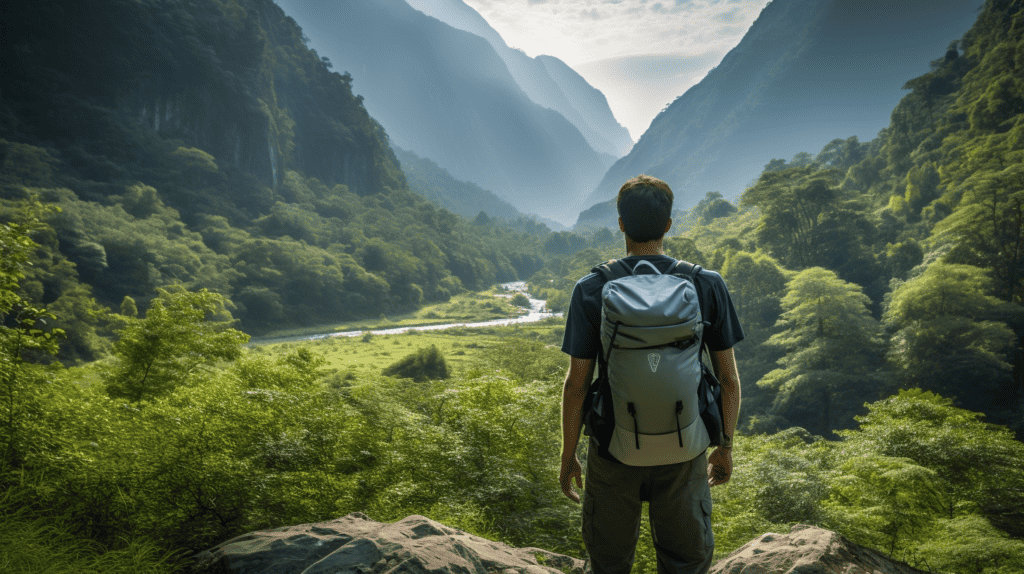
Exploring the difference between “safe travels” and “safe travel”
“Safe travels” and “safe travel” are two phrases commonly used to wish someone a safe journey. While they both convey the same meaning and intent, there is a slight difference in their usage .
The phrase “safe travels” is more commonly used , especially when wishing well to multiple individuals or groups. It is often used as a general expression of good wishes for anyone embarking on a journey, whether it’s by land, sea, or air.
On the other hand, “safe travel” is less common but still acceptable . It tends to be used when addressing an individual specifically or when referring to travel as a concept rather than specific instances.
Common Ways to Wish Someone a Safe Journey
Some numerous alternative phrases and expressions can be used to wish someone a safe journey.
Alternative phrases and expressions for well-wishing
When wishing someone a safe journey, you can use several alternative phrases and expressions. Here are some options to consider:
- Bon voyage !
- Have a great trip !
- Arrive safe and sound !
- Wishing you a smooth journey !
- Enjoy your vacation!
- Take lots of pictures!
- Travel safely !
- Have an amazing adventure!
- Best wishes for your travels !
- May your journey be filled with joy!
Proper etiquette for wishing well on travels
When wishing someone well on their travels, it is important to follow proper etiquette . One should always be sincere and genuine in their wishes, showing that they care about the person’s safety and enjoyment during their journey.
Using phrases like “safe travels” or “have a safe trip” are commonly accepted and appreciated. It is also nice to offer additional blessings or well-wishes such as “wishing you a safe journey” or “enjoy your holiday.” Remember to be respectful of cultural differences and norms when expressing these wishes, as some people may have different customs or superstitions associated with travel.
Travel etiquette is all about spreading positive vibes and goodwill for safe journeys without causing any offense.
Examples of Correct Usage of “Safe Travels” and “Safe Travel”
– “I always say ‘safe travels’ to my friends when they embark on a trip abroad.”
– “When my sister went on a hiking expedition, I wished her ‘safe travel’ since it was a singular journey.”
– “Before boarding the plane, the flight attendant announced, ‘Have a safe flight,’ ensuring everyone’s well-being during their travels.”
– “As an avid traveler, I often use phrases like ‘wishing you a safe journey’ or ‘arrive safe and sound’ to convey my good wishes for others.”
Sentences and scenarios demonstrating the appropriate usage
I often find myself using the phrases “ safe travel s ” and “safe travel” interchangeably, but there are actually subtle differences in their usage. Here are some examples to help you understand when it’s appropriate to use each phrase:
- As my friend embarked on her journey, I wished her safe travels.
- It’s common to use “safe travels” when someone is going on a trip involving multiple destinations or modes of transportation .
- When my brother set off on his solo road trip, I wished him safe travel.
- “Safe travel” is typically used when referring to a single journey or specific mode of transportation .
- Before my parents boarded their flight, I said, “Have a safe flight!”
- Saying “have a safe flight” is another common way to wish someone well on their journey by plane .
- As my colleague headed out for her vacation, I offered the traditional phrase : “Bon voyage!”
- “Bon voyage” is an alternative expression that conveys well – wishes for a safe and enjoyable journey.
- When bidding farewell to a friend going on holiday, I said, “Wishing you a safe journey! Enjoy your time away.”
- Combining the wish for a safe journey with an expression of enjoyment can create a more personalized and heartfelt message.
Tips for using the phrases effectively in various contexts
Here are some tips for using the phrases “Safe Travels” and “Safe Travel” effectively in different situations:
- Use “Safe Travels” when wishing someone well on a long journey or multiple trips.
- Use “Safe Travel” when wishing someone a safe single trip or a specific part of their journey.
- Consider the context and duration of the trip before deciding which phrase to use.
- Be mindful of the person’s mode of transportation – for air travel, saying “Safe Flight” is also common and appropriate.
- Customize your well – wishes by adding specific details to make them more personal and meaningful.
- Stay positive and genuine in your delivery – sincerity goes a long way in conveying your good intentions.
- Consider cultural norms and customs when expressing well-wishes – certain phrases may be more common or preferred in different regions or communities.
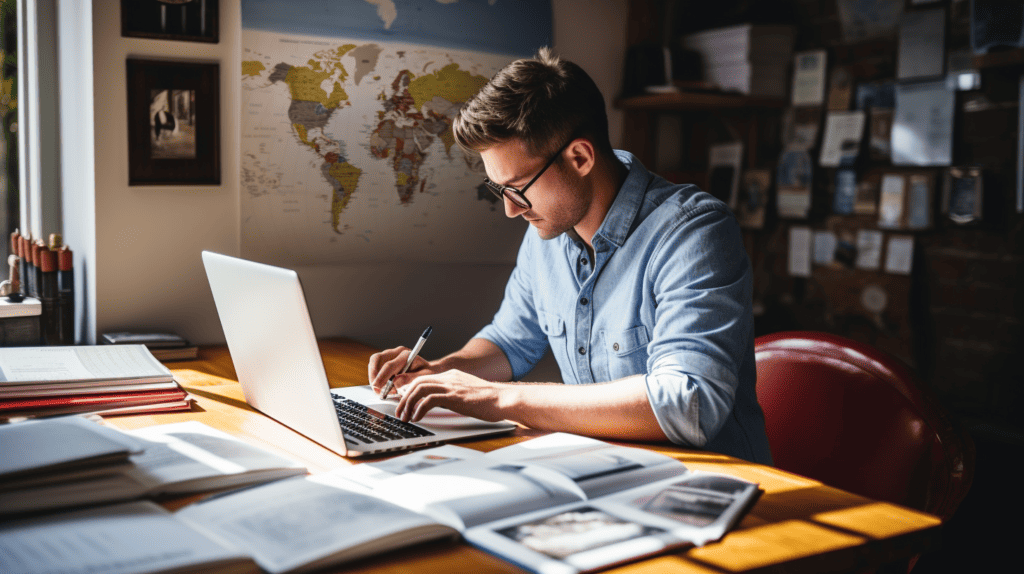
Addressing the Rudeness Concern: Is it Rude to Say “Have a Safe Flight”?
Is it rude to say “Have a safe flight”?
Discussing social norms and cultural differences
Social norms and cultural differences play a significant role in how we communicate our well-wishes for safe travels. In some cultures, people may find it more appropriate to say “Have a safe journey” or “Wishing you a safe trip” rather than using the phrase “Safe Travels.” It’s important to be mindful of these cultural nuances and adapt our expressions accordingly when interacting with people from different backgrounds.
Additionally, social norms can vary when it comes to expressing well-wishes for specific modes of travel such as flights . While saying “Have a safe flight” is widely accepted in many countries, there are places where this phrase might not be commonly used or even considered rude.
Understanding these social norms helps us navigate diverse situations and ensure that our intentions are positively received across cultures.
Understanding the intention behind the phrase and its impact
When we wish someone a safe journey, it’s important to understand the intention behind our words and the impact they can have. By expressing our well-wishes, we are showing care and concern for the person embarking on their travels.
We want them to have a positive experience and return safely. Our words can provide reassurance and comfort , making them feel supported as they set off on their adventure. So next time you wish someone safe travels or safe travel, remember the power of your words and how they can bring positivity into someone’s journey .
Conclusion: Spreading Positive Vibes and Well-Wishes for Safe Journeys
In conclusion, it is important to spread positive vibes and well-wishes for safe journeys. By correctly using phrases like “safe travels” and “safe travel,” we can show our care and concern for others as they embark on their trips.
Remembering proper etiquette and using appropriate expressions will make our wishes meaningful and heartfelt. So let’s continue to wish everyone a safe journey filled with adventure, good fortune, and happy memories!
FAQs on Safe Travel To You
1. should i say “safe travels” or “safe travel” when wishing someone well on a journey.
Both “safe travels” and “safe travel” are grammatically correct and commonly used expressions to wish someone well on their journey.
2. Can I use “safe travels” for multiple people?
Yes, you can use “safe travels” to wish multiple people well on their journeys.
3. Is there any difference in meaning between “safe travels” and “safe travel”?
There is no significant difference in meaning between the two phrases; they both convey the same sentiment of wishing someone a safe journey.
4. Are there any other alternative phrases to wish someone a safe journey?
Yes, other alternatives include phrases like “have a safe trip,” “travel safely,” or simply saying “stay safe.”
About the author

I’ve been fortunate to visit over fifty countries, each journey leaving a unique footprint on my life’s map. From bustling cities to serene nature trails, I’ve immersed myself in different cultures and experiences, constantly broadening my understanding of the world. On this site, I share my travel stories, tips, and insights, hoping to inspire others to embark on their own journeys. Join me as we uncover the beauty of our planet, one adventure at a time. Please reach out here if you need to get in touch.
Leave a Reply Cancel reply
Your email address will not be published. Required fields are marked *
Save my name, email, and website in this browser for the next time I comment.
Latest posts

Practical Gift Ideas for Long-Term Travelers
Finding the right gift for a long-term traveler can be quite a challenge. Believe me, I’ve been there – whether it’s for a digital nomad friend or a student studying abroad, you want to offer something practical yet enjoyable. This is why I’ve compiled these 18+ thoughtful and handy travel-related items that they’re sure to…
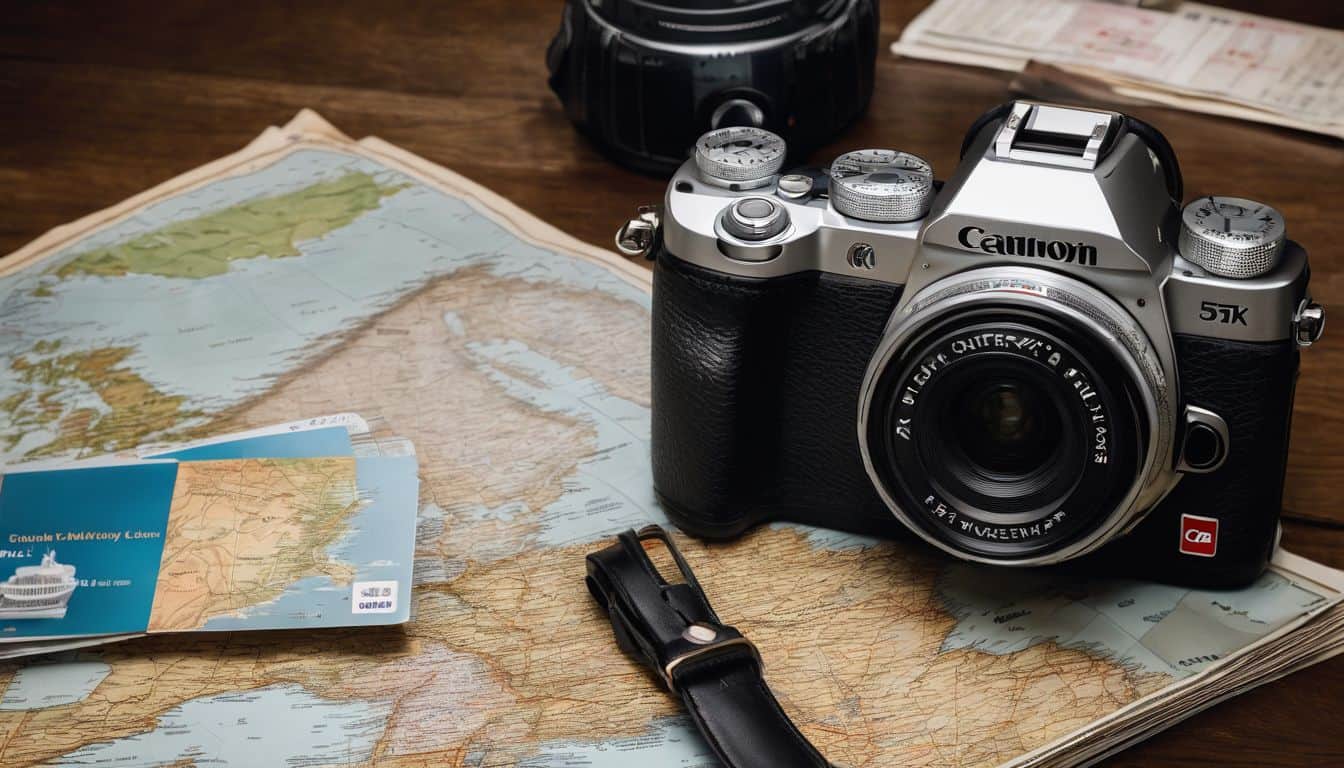
Understanding the Meaning and Usage of ‘Are You Travelling’ in English
Have you ever been unsure about the context or appropriate response when someone asks, “Are you travelling”? You’re not alone. Many of us, including myself, have found ourselves puzzled by this seemingly straightforward question in English. This article is a product of tireless research and aims to demystify its meaning and usage. We’ll journey through…
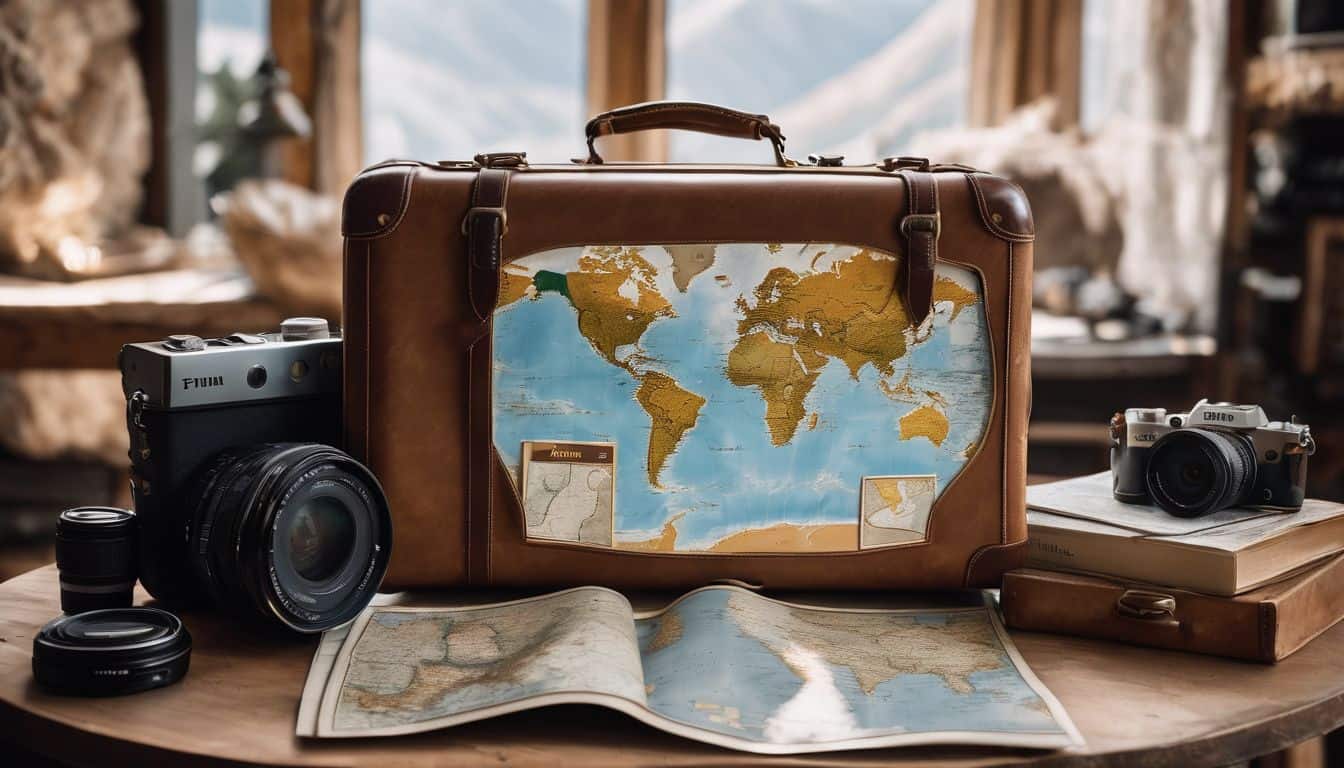
The Countries with the Highest Travel Rates: Who Travels the Most?
Ever found yourself itching for an adventure, wondering which nations are on the move most often? I’ve been bitten by that same travel bug and always wondered who the globe-trotters really are. Diving deep into studies and statistics, I’ve uncovered fascinating facts about the countries with the highest travel rates – like how Finnish people…

How to travel safely and responsibly in 2022 and beyond
Wondering how to travel safely during COVID-19? Many of us are longing to travel again, but only if we can do so safely and responsibly.
We’ve put a lot of thought into the safest ways to take a vacation right now. And we plan to continually update this post with safe travel ideas and tips, as travel restrictions change and Coronavirus travel advice evolves.
In this post, we cover: – Safety tips to help you travel again during COVID-19 – Safe trip ideas for 2022 travel in the United States – What to pack for pandemic travel – Places to visit and travel restriction resources by destination
Disclosure: This post contains affiliate links. If you make a purchase through one of our links, we may receive a small commission, at no additional cost to you.
Table of Contents
How to travel safely and responsibly right now
Step one: Follow CDC travel guidelines
You should already know and practice hand washing, physical distancing, and wearing of face coverings in public.
Responsible travel right now also means being as self-contained as possible to avoid unnecessary interactions or depletion of supplies in the communities you enter. For this reason, consider bringing your own food and supplies when possible.
Be sure to research and obey local restrictions, especially when visiting a destination outside of your home community. Infection rates, hospital capacity, and testing vary widely. Some communities may not have adequate resources in case of an outbreak.
Please respect if a city, State, or county is discouraging non-essential travel.
The following travel activities are ranked on a scale of 1 to 10 by infectious disease experts according to risk of exposure to the virus (first number from Fall 2020 * , second italicized numbers for fully vaccinated people as of April 2021 * ):
Low Risk: – Going camping (2, 1 ) – Getting restaurant take-out (2, 1 ) – Pumping gas (2) – Grocery shopping (3, 1.4 ) – Going for a walk with others (3) Moderate risk: – Staying at a hotel for 2 nights (4) – Going to a beach (5) – Swimming (6) High risk: – Eating inside a restaurant (7, 3.6 ) – Playing contact sports (7) – Traveling by plane (7, 2.7 ) – Going to an amusement park (8) – Attending a large event (9) – Going to a bar (9)
Consequently, we’ll focus on local camping road trips and staycations as the best way to travel safely right now .
Safe trip ideas
After researching safe travel ideas during Covid, we came up with three trip recommendations. These trip ideas were chosen because they:
- Avoid exposure to crowds and public spaces in transit
- Allow you to cook your own meals or order take out, like you would at home
- Avoid being in vehicles with others outside your group
- Let you control who and what enters your living space
- Provide access to no-contact activities like hiking, scenic drives, and lounging
1. Take an RV Road Trip
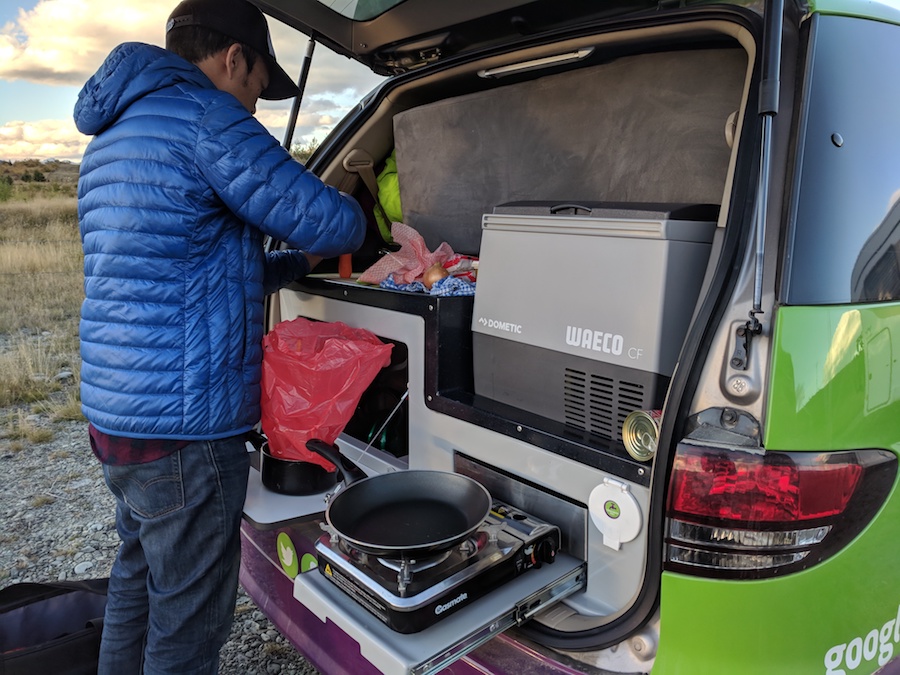
Camping or taking a road trip in an RV allows you to social distance and be self-contained as you travel. With your own kitchen, you have control over what comes in and out of your space, just like at home. And with your own bathroom facilities, you can avoid using public restrooms.
The only difference from staying home vs. a socially distanced RV road trip is that you’ll need to fuel up with gas. By wearing a face mask, watching what you touch at the gas station, and washing hands or using hand sanitizer, this risk can be minimized fairly easily.
Whether you’re driving to reach a destination without airport crowds, or choosing a single stop for a staycation near home, an RV road trip is a great way to get a change of scenery while still maintaining your home safety routines.
Read: How to rent an RV (for beginners)
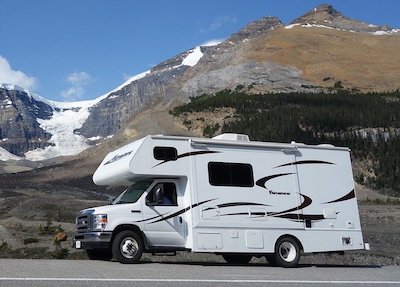
Outdoorsy is like Airbnb for RVs. It’s where RV owners rent out their RVs when they’re not using them.
If you’ve always wanted to try out a motorhome, or want to upgrade your National Parks road trip with a cute Airstream, consider renting through Outdoorsy. Their customer service and reviews have outranked the other top RV rental companies. You can search listings by vehicle type and location. Some owners will even deliver the motorhome to your door! *Take $50 off your Outdoorsy rental with coupon code: intentional
Browse and book RVs, motorhomes, trailers, and campervans on Outdoorsy here
2. Escape with No-Contact Tent Camping
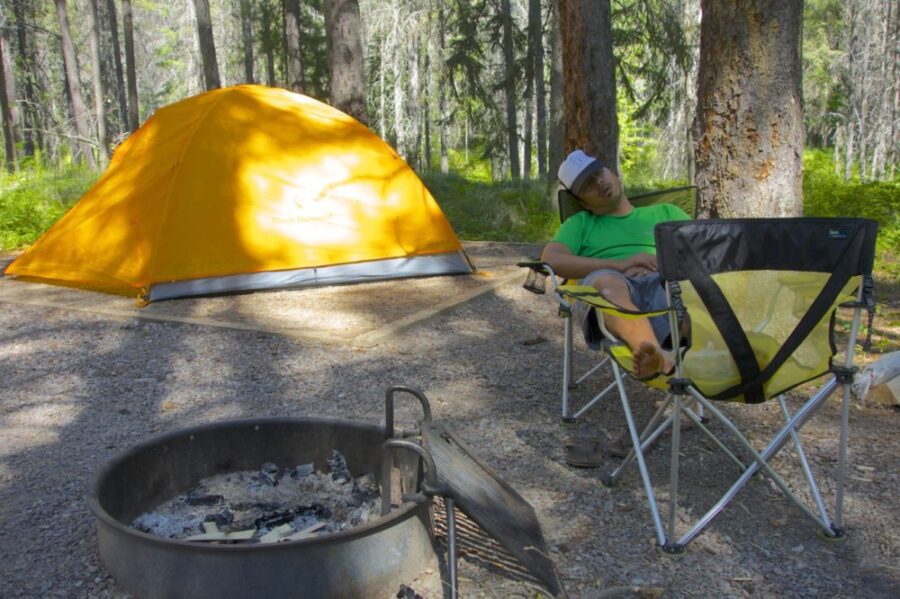
Camping is rated one of the lowest risk travel activities for Coronavirus transmission. Being outdoors with plenty of space not only limits exposure but it’s good for the soul.
With a little prep, you can bring food to cook your own meals. See our camping road trip packing checklist .
But what about using public restrooms when camping? If you don’t have an RV with self-contained bathroom facilities, the essential business of “eliminating waste” becomes your greatest exposure to indoor, pubic facilities where you may need to touch doors, faucets, etc.
By adding a few new camping items, it’s possible to avoid public bathrooms on your camping trip.
See our socially distanced, no-contact camping packing list for the pandemic
3. Staycation in a Vacation Rental
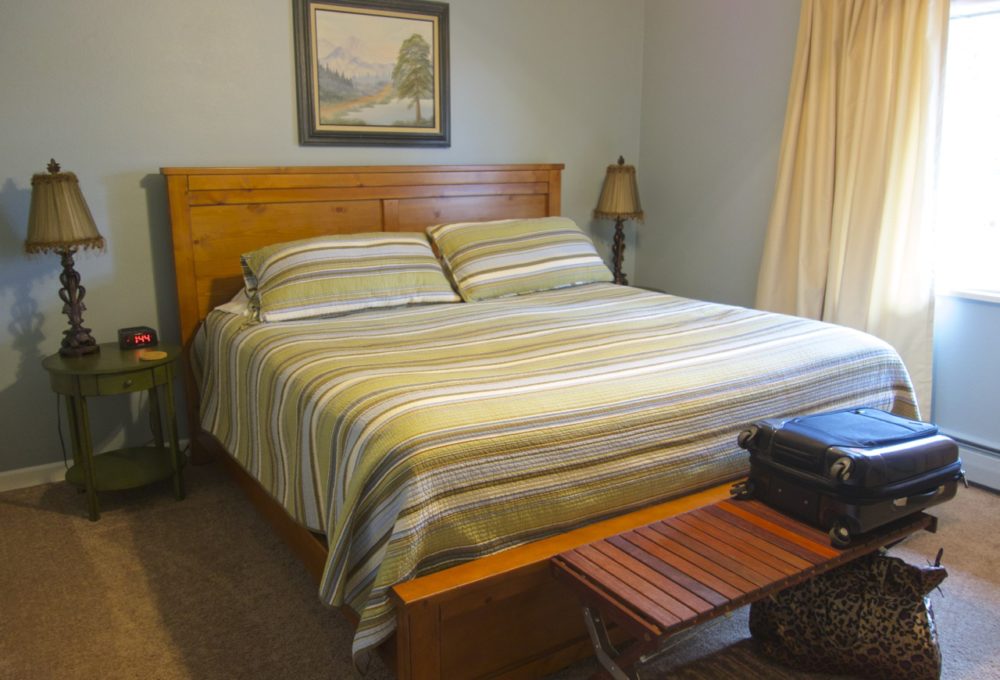
With vacation rentals like Airbnb, you can book an entire guest house or apartment. This way, you can keep similar safety practices that you have at home. For example, you can cook at your vacation home, ordering take out or curbside grocery pick up for meals.
You can book your getaway within driving distance from home, or along the route of a socially distanced road trip. Staying near home is a great way to enjoy a change of scenery while avoiding crowds in airports.
Compared to a hotel stay, you’re like to have fewer interactions with staff or other travelers when renting a vacation home.
Read: What safety precautions to take when renting an Airbnb
What to pack for safe, responsible trips
😷 Face Masks – Cloth face coverings are required in public places. Find N95 masks at Bona Fide > or designer options at Vida >
🧴 Hand sanitizer – Bring enough for your entire trip, as alcohol-based hand sanitizer can be in short supply. Shop hand sanitizer >
💊 Medicine – Bring enough prescription and over-the-counter medication for your entire trip to avoid trips to the clinic.
💳 Vaccine Card Holder – Protect that paper CDC card when traveling abroad (if your country doesn’t offer a digital version). Get a simple plastic protector > or Vegan leather clippable > or Leather passport + card combo holder >
👃 Covid self-test – The most studied rapid antigen self-test with FDA emergency authorization. NOT valid to enter countries. Use for your own peace of mind. Order from CVS > or Walmart >
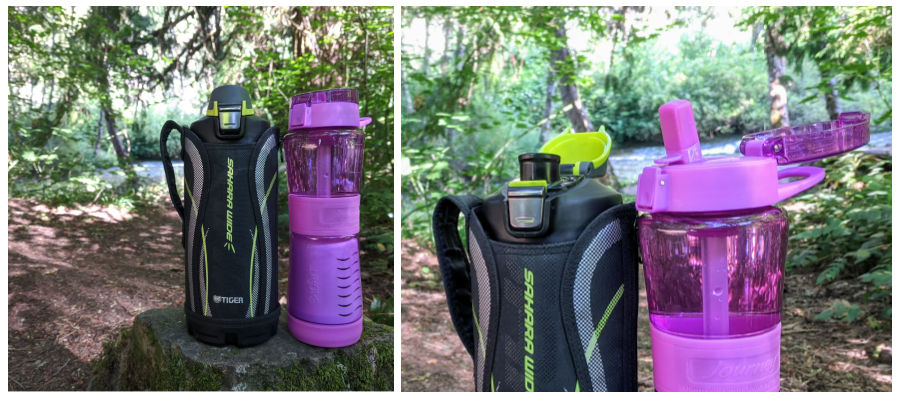
✈️ Travel insurance that covers Covid – We’ve started using Nomad Insurance by Safety Wing for affordable evacuation, international medical, and trip coverage.
Travel restrictions by destination
As travel restrictions change around the world, we’re tracking the travel guidelines for specific destinations in an effort to help you make informed decisions about where to travel and when.
Japan travel requirements 2024: What travelers need to know
Italy travel requirements 2024: what travelers need to know, paris france travel requirements 2024: what american travelers need to know, jamaica travel requirements 2024: what travelers need to know, croatia travel requirements 2024: what travelers need to know, ecuador travel requirements 2024: what travelers need to know, vietnam travel requirements 2024: what travelers need to know, philippines travel requirements 2024: what travelers need to know, thailand travel requirements 2024: what travelers need to know, canada travel requirements 2024: what travelers need to know, hawaii travel requirements 2024: what travelers need to know, merida mexico travel requirements 2024: what travelers need to know.
Let us know in the comments below what questions or ideas you have for traveling safely during Covid-19.
Like this post? Pin it for later or share with friends!
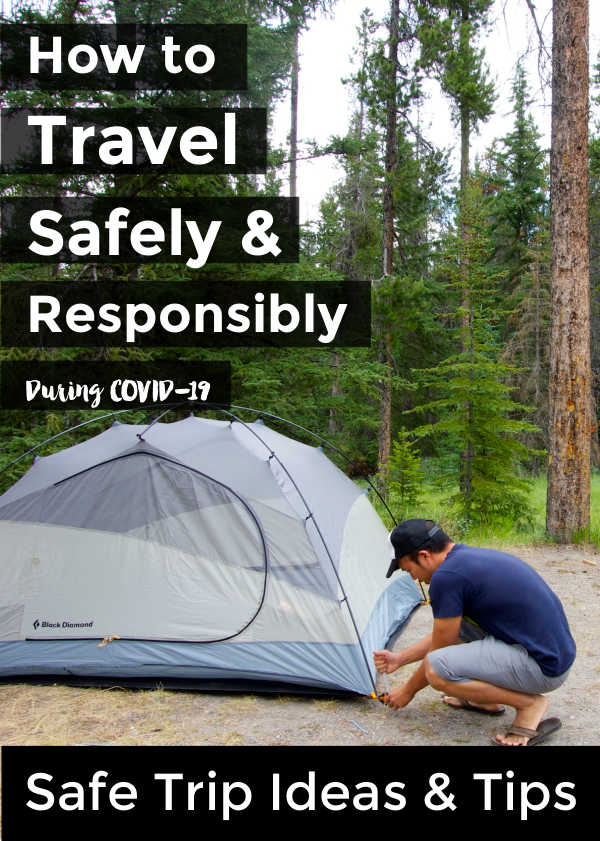
Similar Posts

Our 10+ best 40th birthday trip ideas for couples
Looking for the perfect 40th birthday trip ideas for couples? We’ve been dreaming big since we both turned 40 this year (and celebrated our 15th anniversary). As digital nomads with a passion for travel, we’ve compiled a list of dream trips that will make your milestone celebration unforgettable. Of course, the possibilities are endless when…
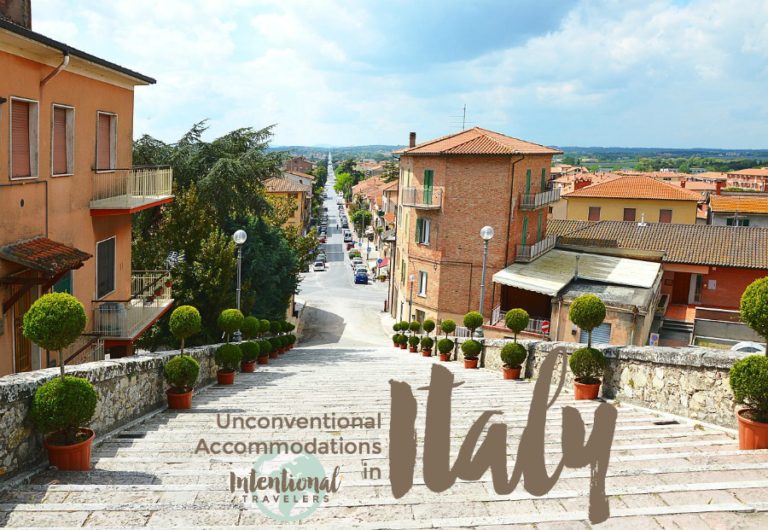
A Guide to Unconventional Accommodations in Italy
Italy is a top destination in Europe, thanks to its beautiful countrysides, historic cities, and outstanding food. There are many different kinds of places to stay in Italy that are worth exploring. When it comes to accommodations, travelers are not limited to hotels. There are several accommodation options in Italy that can be not only…
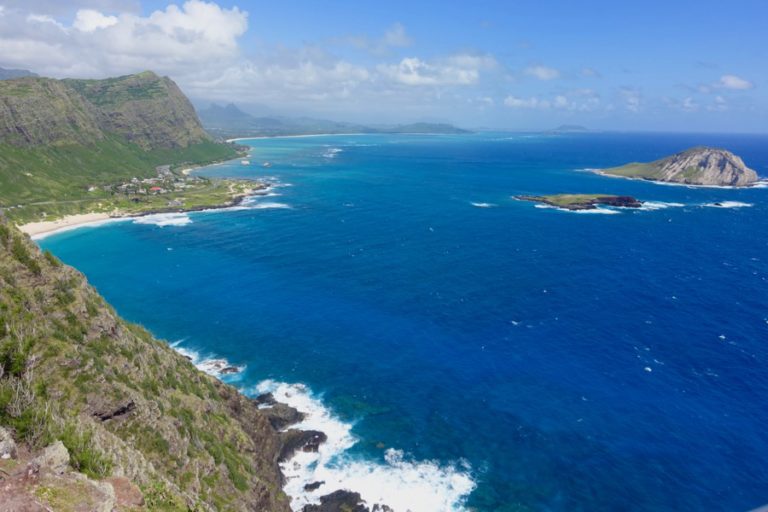
Makapu’u Lighthouse Hike and Tidepools – Oahu, Hawaii
The Makapu’u Lighthouse trail is one of the most accessible and popular hiking paths on Oahu. The lookout is about one mile each way on a wide, freshly paved path where you can enjoy stunning views of the ocean and Koko Head. The wide, paved path up to the look out with a lower, dirt…
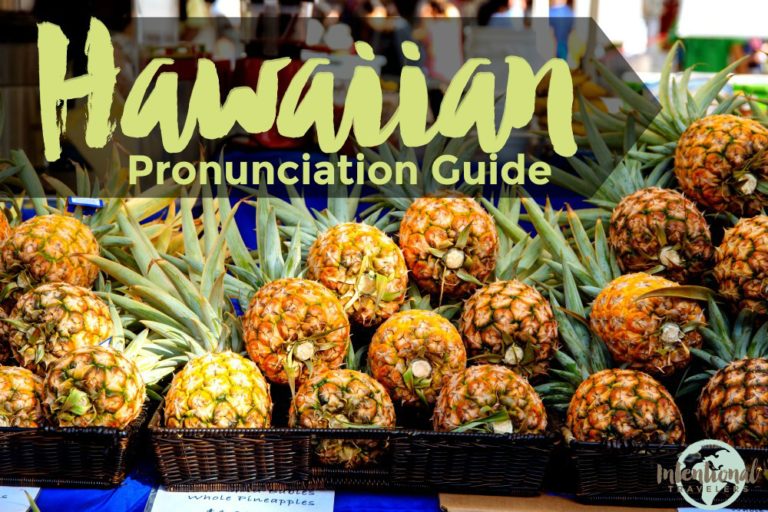
Hawaiian language: what you should know before you go
If you’re traveling to Hawaii, it’s very useful to familiarize yourself with the pronunciation of the Hawaiian language and learn some Hawaiian phrases. It’s also fun! Hawaii is one of the most unique places to visit in the United States because of the native Hawaiian culture and how important it is to everyday life here. Even for Americans, visiting…
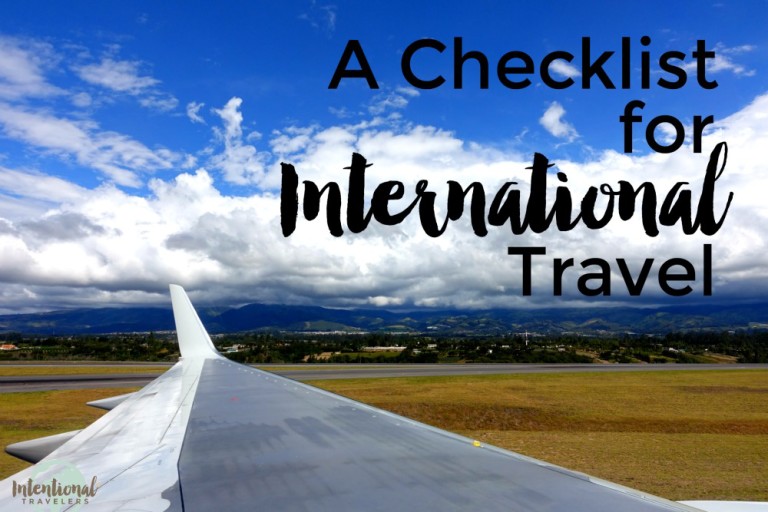
A Checklist for International Travel
When planning a trip abroad, there are a number of important things to do before your departure. The last thing you want is to arrive to your destination, only to realize that your passport is expiring or you left something important at home. We’ve put together this simple checklist from our own international travel experience…
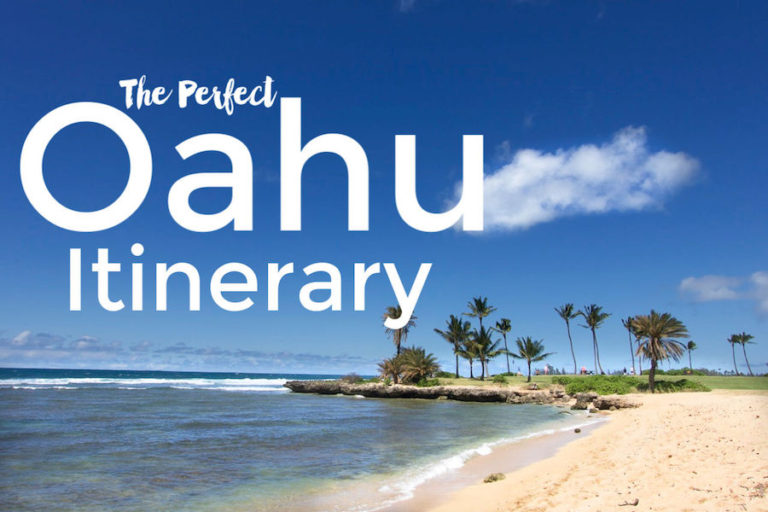
One Week Oahu Itinerary & Activities List
Since Jedd grew up in Honolulu and has a lot of family on the islands, we visit Oahu at least once a year. 11+ years ago, we planned a five day Oahu vacation for our best friends leading up to our wedding. And we have enjoyed sharing Honolulu travel tips and making recommendations for the…
Leave a Reply Cancel reply
Your email address will not be published. Required fields are marked *
This site uses Akismet to reduce spam. Learn how your comment data is processed .

IMAGES
VIDEO